This article was co-authored by Will Fuller. Will Fuller is a Certified Massage Therapist and Wellness Educator working in San Francisco, California. Will has worked with the Sports and Recreation Center at the University of California, San Francisco (UCSF), taught sports in England, Kenya, and Kuwait, and is now affiliated with the Chiro-Medical Group. He was trained in physical rehabilitation under a program founded by Dr. Meir Schneider. He has a Bachelors in Sport Science and a Post-Graduate Certificate of Education in Physical Education from Southampton University.
This article has been viewed 18,230 times.
Strengthening your neck can improve mobility, reduce pain and tension, and minimize your risk of injury. With a few simple exercises, you can focus on strengthening your neck muscles and building up the muscles that support them. You can also use a few simple stretches and strategies to help take care of your neck and keep it strong.
Steps
Exercising Your Neck Muscles
-
1Do chin tucks against a door jamb to strengthen your neck muscles. Stand with your back against a door jamb and your feet about 3 inches (7.6 cm) away from the bottom of the jamb. Keep your chin down and pull your upper back and head backward until your head touches the door jamb. Hold the position for 10 seconds, then gently release it.[1]
- Repeat this exercise 10 times to exercise your neck and stretch the muscles of your upper shoulders.
-
2Perform 10 prone cobra exercises a day to work your neck and core. Lie face down on the ground, with your forehead on a rolled up towel for comfort. Place your arms at your side, palms down. Pinch your shoulder blades together, lift your hands off of the floor, and gently raise your forehead about 1 inch (2.5 cm) off of the towel. Keep your eyes looking straight at the floor and hold the position for 10 seconds.[2]
- Repeat the movement 10 times to strengthen your neck muscles.
- Place your tongue on the roof of your mouth to help stabilize the muscles in the front of your neck.
- Do not tilt your head back to look forward. Instead, keep your eyes focused on the floor in front of you.
Advertisement -
3Squeeze your shoulder blades together to improve your posture. A shoulder scapular squeeze will strengthen your neck muscles and promote good posture. Use the muscles in your back to pull your shoulder blades together. Keep your back and neck straight while you hold the squeeze for 5 seconds.[3]
- Repeat the squeeze for 10 repetitions and do the exercise twice a day for the best benefits.
-
4Hold a plank for 15 seconds to a minute to build stability. A plank is an exercise that involves holding your body in a stationary position similar to a push-up for a period of time. It’s an easy way to activate all of the muscles in your body and will help build the stabilizing muscles in your neck and back. To perform a plank, get down on the floor into a push-up position, with your hands under your body in line with your shoulders and your back flat and straight, and hold the position for up to a minute.[4]
- Start with short time increments such as 15 seconds at a time so you can get used to the position.
- Set a timer to go off so you know when to release the plank.
Tip: If holding yourself in a push-up position on the floor is too difficult, try leaning over a table to perform a plank. Keep your back flat and straight, tighten your core muscles, and place your forearms on the table to support yourself.
-
5Strengthen your core muscles to decrease strain on your neck. Your neck muscles may be working overtime if the muscles of your abdomen, back, and buttocks aren’t strong. To improve the strength and function of your neck, be sure to spend time focusing on the muscles of your core as well.[5]
- Bodyweight exercises like walking, running, and dancing are great ways to use your core muscles.
- Try using abdominal exercises to strengthen your core muscles.
- Start weight training to build up the muscles in your back, shoulders, and neck.
-
6Exercise your neck muscles 2-3 times a week. It’s important to allow your neck muscles to heal and repair themselves, so don’t exercise every day or on consecutive days. But resting for more than a couple of days can make it harder for you to get back into the habit of exercising your neck. A good general rule is to aim for 2-3 sessions per week where you focus on working your neck muscles.[6]
- If your neck is sore or strained, don’t workout so your muscles or injury can heal.
Stretching Your Neck
-
1Bring your chin to your chest to stretch the back of your neck. Stretching your neck muscles is important for their health and strength. Tuck your chin down towards your chest to stretch the back of your neck as well as the top of your shoulders. Take a few deep breaths and hold the stretch for 15-20 seconds before gently releasing it and bringing your head back up.[7]
- You can repeat the stretch as many times as necessary.
-
2Tilt your head backward and hold the stretch to release tension. Keep your back straight and tilt your chin upward so you’re looking at the sky. You’ll feel the muscles at the front and sides of your neck stretch. Hold the position for about 20 seconds before you release it.[8]
- Keep your mouth closed so your chin will help to stretch the muscles of your neck.
-
3Lean your head from side to side to flex and stretch your neck. Keep your shoulder still and tilt your head to the left, trying to touch your left ear to your left shoulder without straining. Keep your eyes focused ahead so you don’t twist your neck. Hold the position for a moment, then gently release the tension and perform the stretch on the other side of your body.[9]
- Focus on finding the tension in your neck and allowing the weight of your head to stretch your muscles.
- Stay relaxed and be sure to breathe while you perform the movement.
-
4Perform gentle neck stretches daily to take care of your muscles. Take about 5-10 minutes each day to spend some time stretching out your neck muscles. You’ll improve your neck’s mobility, increase blood flow and circulation, and will help your muscles stay healthy and strong.[10]
- Ease into your stretches by starting slowly and gently so you don’t strain anything.
Tip: A great time to stretch your neck is in a hot bath or shower. The warm water will prime and loosen your muscles and allow you to stretch them more easily.
Taking Care of Your Neck
-
1Massage your neck to loosen up your neck muscles. Use your fingers and focus on the nape of your neck, where it connects to the top of your shoulders. Apply pressure to your muscles and move your hands in a circular motion to relieve any tension or pain in them.[11]
- Massaging your muscles after you exercise your neck will improve blood flow and increase circulation to help them repair.
- Look online for massage therapists near you that you can pay to perform a professional massage on your neck.
-
2Stand up from your desk at least once an hour. Whether you’re at work or school, sitting in a chair at a desk for too long is bad for you posture and will cause additional strain on your neck.[12] At least once every hour, stand up from your chair and stretch your muscles or move around a bit to get your blood flowing.[13]
- Set a reminder on your phone or computer to take a small break every hour.
- It’s also good for your eyes to take a break from your screen once an hour.
-
3Sit in a chair that doesn’t make you slouch. Bad posture will cause your neck muscles to get weaker and can build tension in your upper shoulders. Use good posture when you sit and use a chair that helps you sit up straight while you work.[14]
- Choose a chair that doesn’t cause you to hunch over and supports your lower back to keep your spine in alignment.
- Adjust your desk, chair, and computer screen so you don’t have to crane your neck or slouch to work at your desk comfortably.
-
4Avoid looking down at your phone. Whenever you’re checking your phone or composing a text message, hold it at eye level so you don’t crane your neck. Over time, rounding your shoulders and craning your neck can strain the muscles in your shoulders and neck and cause your shoulders to have a rounded appearance.[15]
- Hold your phone so you don’t have to bend your neck at all to see the screen.
- Avoid holding your phone between your ear and shoulder when you walk as well or you’ll put additional strain on your neck.
-
5Sleep with your head and neck aligned with your body. Sleeping in a good position will keep your neck from getting strained at night. Try sleeping on your back to flatten your spinal muscles and avoid using too many pillows, which can elevate your head and put your neck out of alignment with your spine.[16]
- Find a comfortable position that doesn’t cause your neck to flex or bend.
Tip: Try elevating your thighs on pillows when you sleep to realign your spine and neck.
-
6Quit smoking to reduce your risk of neck pain. Quitting smoking will lead to many health benefits, including lowering your risk of developing pain in your neck. For your health and the health of those around you, make the decision to quit smoking.[17]
- Try nicotine replacement therapy to help wean you off of the nicotine.
- Talk to your doctor about treatments you can do to help overcome your addiction.
References
- ↑ https://www.spine.org/KnowYourBack/Prevention/Exercise/Cervical-Exercise
- ↑ https://www.spine.org/KnowYourBack/Prevention/Exercise/Cervical-Exercise
- ↑ https://www.spine.org/KnowYourBack/Prevention/Exercise/Cervical-Exercise
- ↑ https://www.health.harvard.edu/pain/neck-pain-core-exercises-can-help
- ↑ https://www.health.harvard.edu/pain/neck-pain-core-exercises-can-help
- ↑ https://www.mayoclinic.org/diseases-conditions/neck-pain/diagnosis-treatment/drc-20375587
- ↑ https://www.mayoclinic.org/healthy-lifestyle/fitness/multimedia/stretching/sls-20076840?s=10
- ↑ https://www.mayoclinic.org/healthy-lifestyle/fitness/multimedia/stretching/sls-20076840?s=10
- ↑ https://www.mayoclinic.org/healthy-lifestyle/fitness/multimedia/stretching/sls-20076840?s=10
- ↑ https://www.mayoclinic.org/diseases-conditions/neck-pain/diagnosis-treatment/drc-20375587
- ↑ https://www.mayoclinic.org/diseases-conditions/neck-pain/symptoms-causes/syc-20375581
- ↑ Will Fuller. Certified Massage Therapist. Expert Interview. 9 January 2020.
- ↑ https://www.health.harvard.edu/pain/neck-pain-core-exercises-can-help
- ↑ https://www.health.harvard.edu/pain/neck-pain-core-exercises-can-help
- ↑ https://www.health.harvard.edu/pain/neck-pain-core-exercises-can-help
- ↑ https://www.mayoclinic.org/diseases-conditions/neck-pain/symptoms-causes/syc-20375581
- ↑ https://www.mayoclinic.org/diseases-conditions/neck-pain/symptoms-causes/syc-20375581
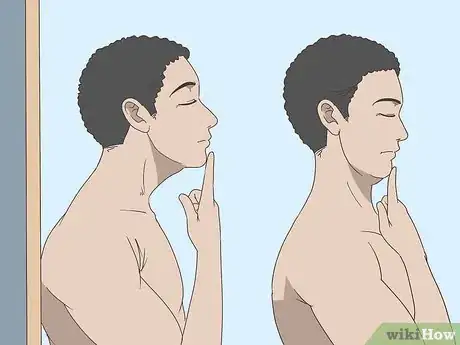
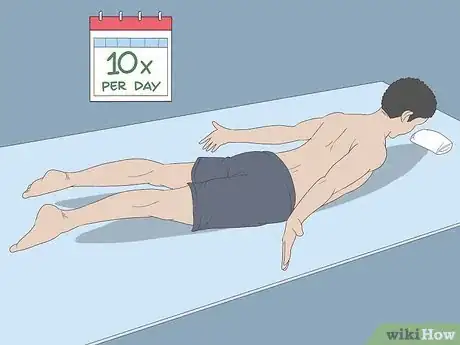

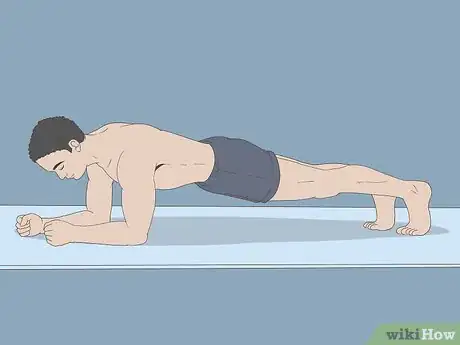
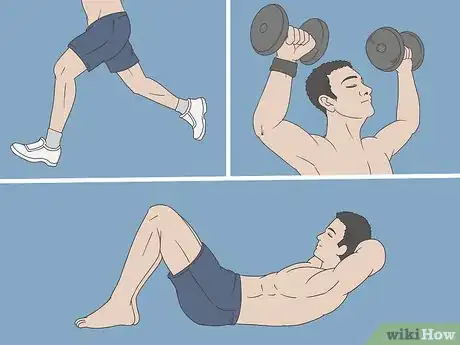


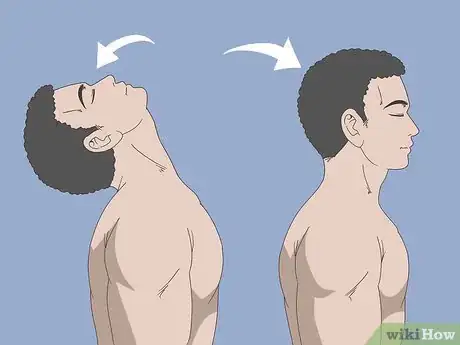


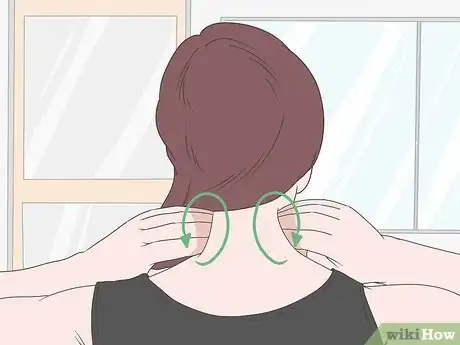


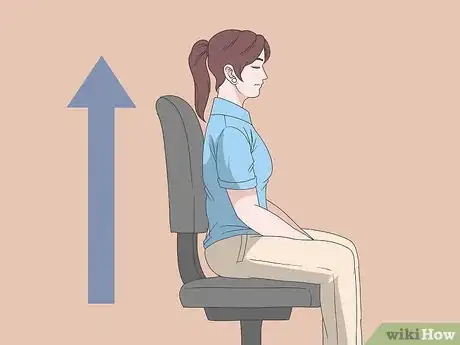










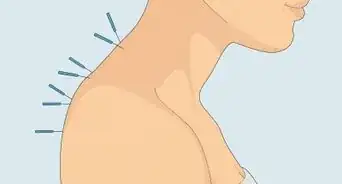
-Step-3-Version-3.webp)

















































